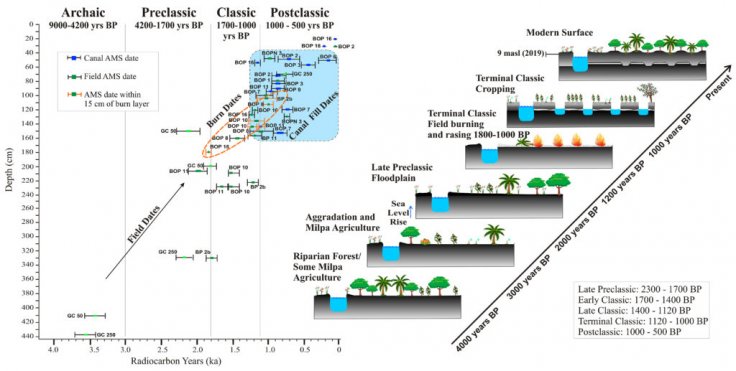
Researchers have revealed that they have found new evidence that showed ancient Maya had more intensive and wide-ranging anthropogenic impact on globally important tropical forests than previously known.
The geographical research revealed that Mayan people created massive agricultural features in wetlands, potentially to fulfil the needs of the population and environmental pressures by potentially increasing atmospheric CO2 and methane through burn events and farming in the ancient era.
Previously, researchers believed that the advanced urban and rural infrastructure of ancient Maya altered ecosystems within globally important tropical forests. But this new study showed that how early human activity began to affect the environment.
Tim Beach, the lead author of the new study and holds the C.B. Smith, Sr. Centennial Chair said, "We now are beginning to understand the full human imprint of the Anthropocene in tropical forests.
"These large and complex wetland networks may have changed climate long before industrialization, and these may be the answer to the long-standing question of how a great rainforest civilization fed itself."
In this study, the team of researchers have used 250 square kilometers of high precision laser imagery technology to map the ground beneath swamp-forest canopy.

Later they found evidence which suggested that the great and mysterious Maya faced environmental pressures, including rising sea levels in the Preclassic and Classic periods, almost 3,000 to 1,000 years ago. They also faced droughts during the Late/Terminal Classic and Early Postclassic periods which are 1,200 to 900 years ago.
To secure themselves from such environmental pressure, ancient Mayan people converted rain forests to wetland field complexes and also created canals to manage water quality as well as quantity.
The co-author of the study Sheryl Luzzadder-Beach, who holds the Raymond Dickson Centennial Professorship at UT Austin said that these wetlands were very attractive during the droughts, "but the Maya also had to be careful with water quality to maintain productivity and human health."
The researchers also suggested that almost 1,800 to 1,000 years ago Maya responded to a large population shift and fulfilling food demands by expanding their network of fields and canals in areas accessible by canoe to the broader of Maya.
During the study, the research team also unveiled evidence of multiple ancient food species, such as maize as well as animal shells and bones.
It is possible that the Maya people and the expansion of wetland caused additional CO2 in the atmosphere.
As per Beach, "Even these small changes may have warmed the planet, which provides a sobering perspective for the order of magnitude greater changes over the last century that are accelerating into the future."
Beach also added that in their study published in the Proceedings of the National Academy of Sciences, by The University of Texas at Austin has given evidence for early and extensive human impacts on the global tropics that is enough to assume that "the increase of atmospheric carbon dioxide and methane from burning, preparing and maintaining these field systems contributed to the Early Anthropocene."









